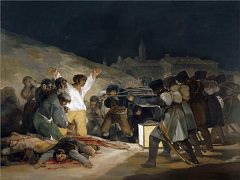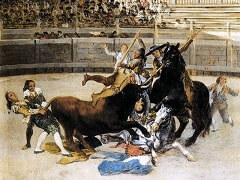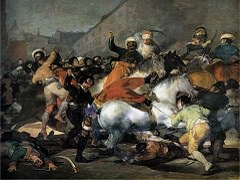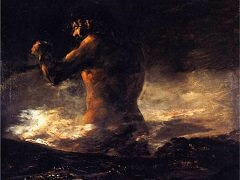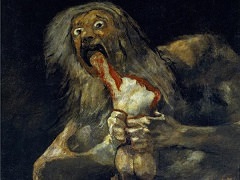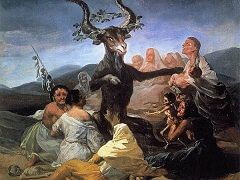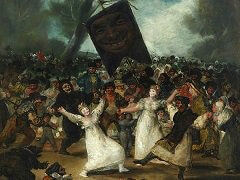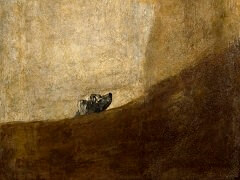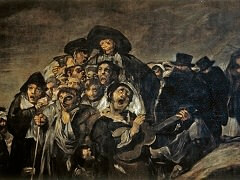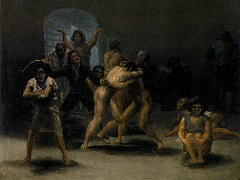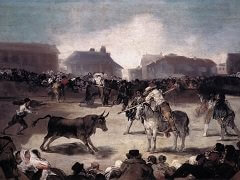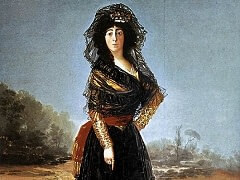Prince of the Peace, 1801 by Francisco Goya

This portrait was painted between July and October 1801 to commemorate the victory in Portugal, the War of the Oranges, so-called because Godoy, Chief Minister, is said to have sent a gift of oranges to the Queen in celebration. The Portuguese banners prominent in the foreground were awarded to Godoy in July and in October he was made Generalissimo of land and sea, which entitled him to wear a blue sash in place of the red sash of Captain General, which he wears here. Goya has portrayed Godoy in an elaborate and unusual composition, in a reclining posture reminiscent of some of his paintings of women on couches, seemingly inappropriate for the hero of a military victory.
Goya's portrait hints at disrespect for the pomposity of his sitter, though Godoy was an important patron, a collector on a grand scale, for whom Goya painted many works including the famous portrait of his wife, the Countess of Chinchon. Godoy was also owner of the two Majas and may even have commissioned them. Goya's friendship with liberal ministers, such as Jovellanos and Saavedra, did not affect the relationship between the First Court Painter and the Chief Minister, whose rapid rise to power, attributed to his liaison with the Queen, made him notorious. According to contemporary commentaries this is a reference to Godoy and Queen Maria Luisa, in particular to an occasion when she was mocked by a group of washerwomen for her unseemly behaviour. Yet despite all this, Godoy in his Memoirs written years later in France referred to Goya's Caprichos with pride as if he had been responsible for their publication.

